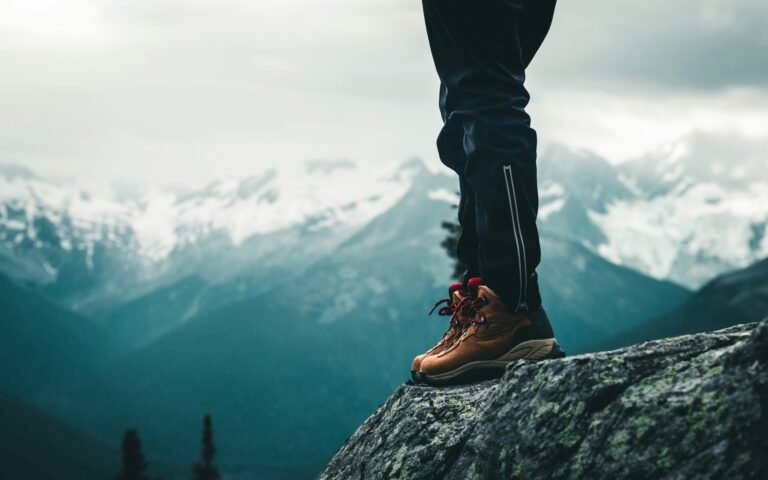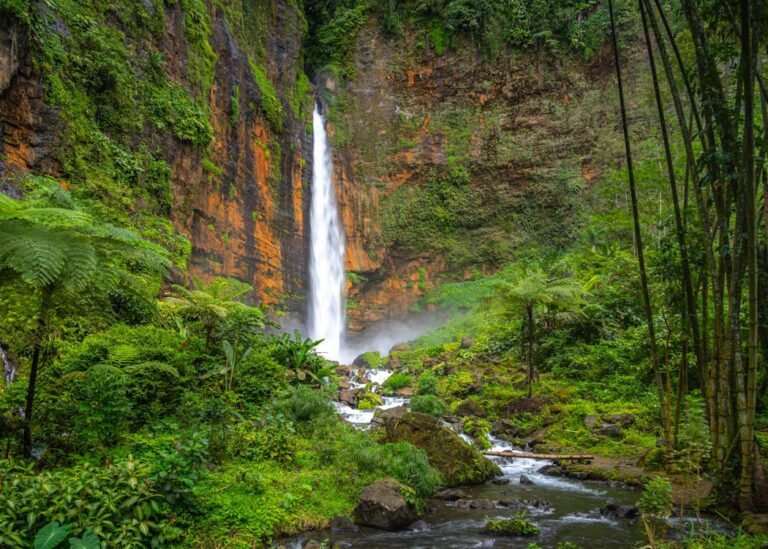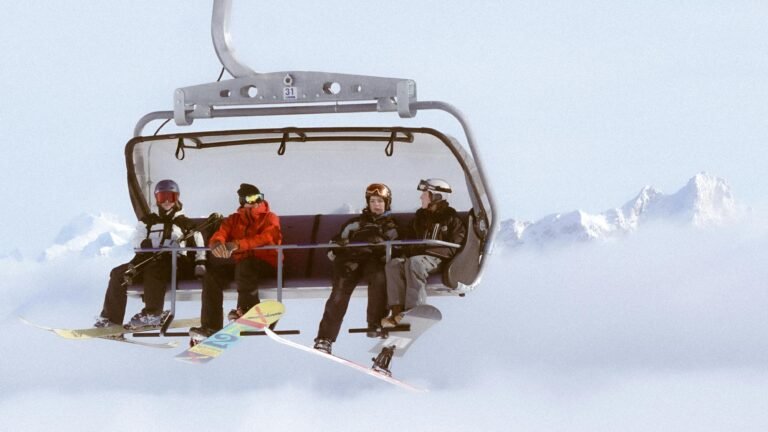The Ultimate Day Hike Packing List

Hiking’s one of those things that reminds you how simple life can be—just you, the trail, and a good stretch of open sky. To make your hike enjoyable, having a good Day hike packing list is essential.
Having the right basics in your pack keeps things comfortable and safe out there.
So here’s a straightforward list of essentials for a day hike, whether you’re just getting into it or you’ve been around the trail a few times.
Pack smart, stay ready, and the rest will take care of itself.
P.S. You can download the accompanying PDF checklist below to keep it handy on your next adventure.
Essential Day Hiking Gear

Backpack
First up, get yourself a backpack that fits well and won’t feel like a burden halfway through.
For most day hikes, something in the 15-30 liter range will do the job—big enough for essentials, but not so bulky that it slows you down.
Look for padded straps, a bit of water resistance, and ideally an adjustable hip belt to spread the weight around evenly.
The key here is comfort, since this pack will be your companion for the entire hike, so make sure it’s something you don’t mind carrying for hours.
Navigation Tools
Knowing your route is non-negotiable, even if you think you know the area well.
Bring a physical map and compass—old-school tools that don’t rely on battery life or cell signal.
If you want a digital backup, a GPS watch is worth considering. It’ll track your path and help you stay oriented without needing your phone, which can easily die or lose service when you’re out there.
For a rundown on the top picks, check out The Best GPS Watches for Hiking—these can be a game-changer when you’re deep in the wilderness.
Water and Hydration Supplies
Keeping hydrated on the trail is crucial.
Some hikers swear by hydration bladders since they fit inside your pack and let you sip through a tube without stopping, while others stick to traditional water bottles.
Whichever way you go, bring enough water—around 1 liter for every two hours of hiking is a good rule of thumb.
If there’s a chance you’ll need to refill from natural sources, it’s smart to pack a portable water filter or purification tablets.
For a rundown of options, check out The Best Ways to Carry Water While Hiking and The Best Water Filters for Hiking—both can be lifesavers when you’re miles from anywhere.
Snacks and Nutrition
When it comes to trail snacks, go for something light, energizing, and easy to eat on the move.
The basics—trail mix, protein bars, nuts, and dried fruit—are great options since they pack a lot of energy without adding much weight.
And remember to pack what suits your own diet, whether that’s gluten-free, vegan, or anything else.
The goal is to keep your energy steady and feel good out there, no matter what your needs are.
Clothing and Footwear for Day Hikes

Layering Basics
Layering depends a lot on the climate you’re hiking in.
If you’re in cooler or mountain climates where temperatures can swing drastically, that full three-layer system—base, mid, and outer—is essential.
A merino wool or synthetic base will keep you dry, a thicker fleece or insulated jacket as a mid-layer keeps you warm, and a durable, waterproof shell is a must for sudden storms or strong winds.
In hot or humid climates, you might skip the heavy mid-layer, opting for a light, breathable base and a lightweight rain jacket to stay dry during showers.
Dry, desert-like areas with hot days and cold nights might need a light insulating layer for warmth after sundown, but prioritize breathable materials that can handle sun exposure during the day.
Tailor your layers to the extremes you might face, but always have the basics covered—staying comfortable and protected makes a world of difference on the trail.
Weather-Appropriate Gear
Checking the forecast before you go is essential, but the weather can still surprise you, so always pack a lightweight rain jacket or windbreaker.
Go for something packable that won’t crowd your backpack, but still gives solid protection if rain or wind kicks up.
And if you’re expecting clear skies, sun-protective clothing is a smart add—long sleeves, a hat, or UV-rated fabric can keep you covered from harsh rays.
That way, you’re ready for anything the day throws your way, rain or shine.
Footwear
The right footwear can make or break your hike.
For day hikes on easy trails, trail shoes might be your best bet—they’re lighter, more flexible, and easier on your feet.
But if you’re tackling rocky or muddy terrain, hiking boots will give you that extra support and stability you’ll be grateful for.
For solid choices that don’t break the bank, check out The Best Affordable Hiking Boots.
Whatever you choose, pair your shoes with moisture-wicking socks to keep your feet dry and blister-free.
Comfort out there starts with your feet, so don’t skimp on the basics.
Safety and Emergency Essentials

First Aid Kit
A compact first aid kit is essential for any hike.
Make sure it has the basics—bandages, antiseptic wipes, pain relievers, and any medications you might need.
You can find pre-packed kits that are small, lightweight, and slip easily into your backpack, giving you quick access if you run into minor scrapes, blisters, or other common trail issues.
It doesn’t take up much space, but it can make a huge difference when something unexpected comes up.
Multi-Tool or Pocket Knife
A small multi-tool or pocket knife is one of those things you’ll be glad to have when you need it.
It can handle everything from opening snack wrappers to making quick gear repairs.
Go for a lightweight option that doesn’t add bulk, but still includes the basics—a knife blade, scissors, and maybe pliers.
Fire Starter and Emergency Shelter
For emergencies, pack a fire starter—matches, a lighter, or a fire striker—and an emergency bivy or space blanket.
These items are lightweight but can be lifesavers if you’re stuck out after dark or hit with unexpected weather.
Even if you don’t plan to stay overnight, it’s smart to have a basic shelter option.
For more substantial shelter ideas, check out The Best Lightweight Hiking Tent, but for a typical day hike, a compact space blanket should have you covered.
It’s all about being ready, just in case.
Whistle and Signal Mirror
A whistle and signal mirror are small but powerful tools if you ever need to call for help on the trail.
Many backpacks these days have a whistle built right into the chest strap—convenient and easy to reach.
If yours doesn’t, grab a lightweight whistle to clip on.
A signal mirror is also worth packing; it can help rescuers spot you more easily if you’re lost or injured.
Simple tools like these take up almost no space but can make all the difference when seconds count.
Sun Protection Essentials
Sunscreen
When you’re out hiking, long sun exposure is pretty much a given, so bring sunscreen with SPF 30 or higher, and reapply it as needed, especially if you’re sweating.
Hat and Sunglasses
A solid hat and good sunglasses are key for sun protection on the trail.
A wide-brim hat offers full coverage for your face, ears, and neck, while a baseball cap works well if you’re going for simplicity.
As for sunglasses, polarized lenses are a great option—they cut down glare, which makes a big difference if you’re hiking around water, snow, or even just in bright, open areas.
A bit of extra protection for your face and eyes keeps you focused on the trail, not on squinting or sunburn.
Additional Comfort Items

Trekking Poles
Trekking poles can be a game-changer for balance and taking pressure off your knees, especially on steep or uneven terrain.
If you don’t plan to use them the whole time, go for adjustable or foldable poles that easily stow in your pack.
They give you the support when you need it and pack away when you don’t—a flexible option that keeps you prepared without adding bulk.
Insect Repellent
Bug bites can turn a good hike into an uncomfortable one fast, so pack some insect repellent to keep the pests at bay.
A spray or lotion should do the job, and there are natural options if you prefer.
But if you’re heading into tick-heavy areas, consider a repellent with DEET for extra protection.
A little prevention here can save you a lot of irritation down the trail.
Hand Sanitizer and Tissues
Keeping your hands clean on the trail is smart, especially if you’re handling food.
A small bottle of hand sanitizer and a pack of tissues are easy to carry and take up almost no space, but they come in handy when you need them.
It’s a simple addition that makes a big difference for hygiene and comfort while you’re out there.
Eco-Friendly Hiking Practices

Leave No Trace Principles
Respecting the trail and protecting nature is a key part of hiking responsibly.
Following Leave No Trace principles helps minimize our impact—stick to marked paths, leave rocks, plants, and artifacts as they are, and keep a respectful distance from wildlife.
These simple actions ensure the trail stays beautiful and accessible for everyone, including future hikers.
Packing Out Trash
Whatever you carry onto the trail, make sure you take it all back with you.
That includes everything—food wrappers, fruit peels, and any other small items that might seem harmless but can actually disrupt the ecosystem.
Bringing along a reusable bag for waste is a simple habit that helps keep nature clean and safe for everyone.
Avoiding Wildlife Disruption
One of the great things about hiking is spotting wildlife along the way, but it’s best to observe from a distance.
Avoid feeding animals and keep your food sealed and secure to prevent attracting them to your gear.
This keeps both you and the animals safe, allowing them to stay wild and ensuring your hike remains undisturbed.
Day Hike Packing Checklist
Conclusion
Being prepared is something I’ve learned the hard way on a few trails.
I still remember a hike early on where I thought I’d packed enough water, only to realize halfway up the trail that I’d underestimated both the distance and the heat.
That day taught me a lot about packing intentionally and double-checking essentials.
With a solid packing list, you can avoid those rookie mistakes and head out knowing you’re covered.
Trust me, having the right gear can make the difference between a hike you want to remember and one you’d rather forget.
So, pack thoughtfully, keep this list handy, and enjoy every step of your adventure. Ready to hit the trail? Share this with fellow hikers and plan your next outing with confidence—you’ll be glad you did.
Ready to plan your next hiking trip?
Dive into How to Plan a Hiking Trip: Step-by-Step Guide for Beginners for expert tips and a detailed roadmap to make your hike a success!






